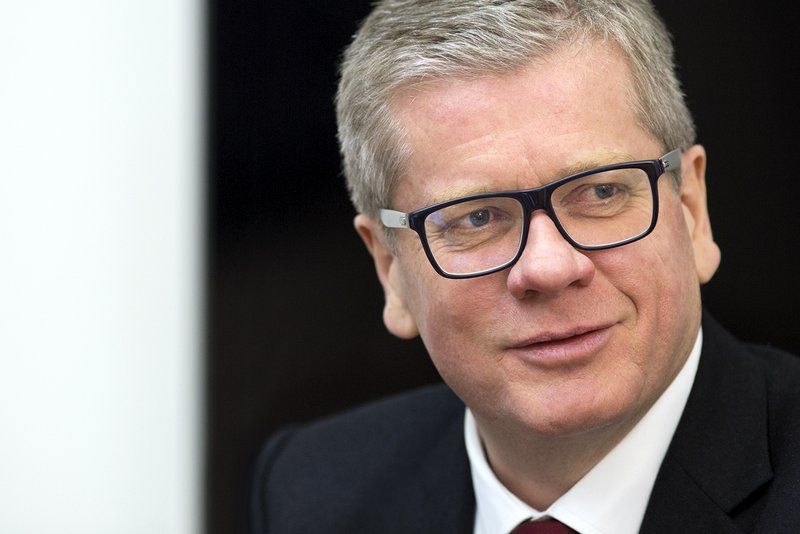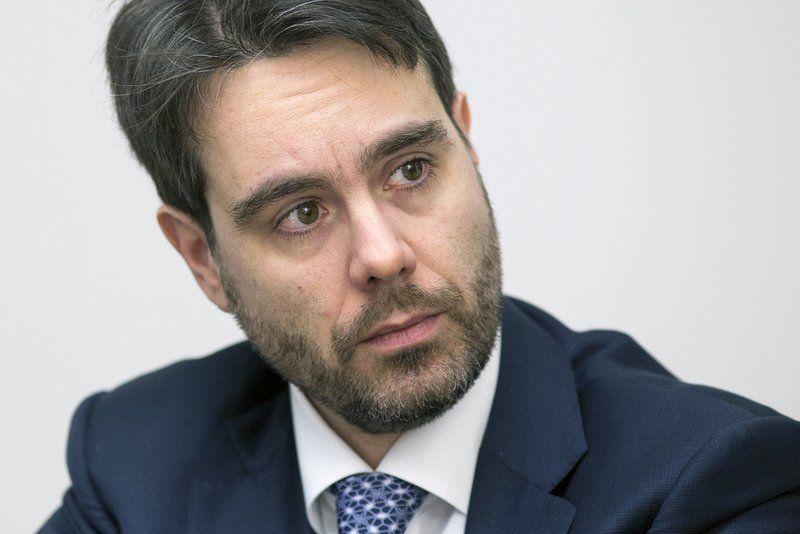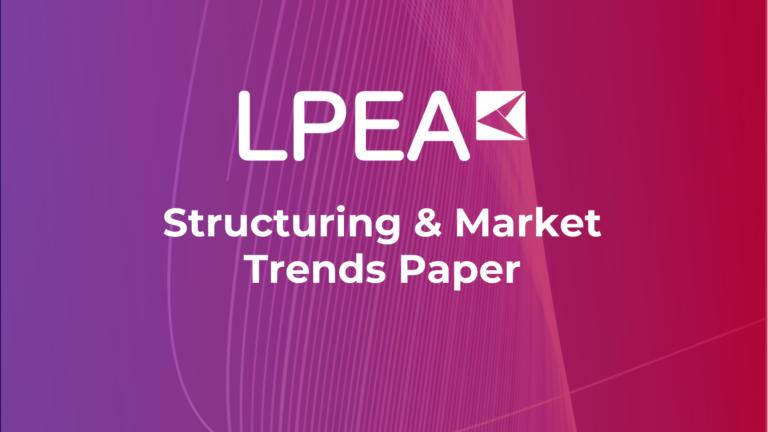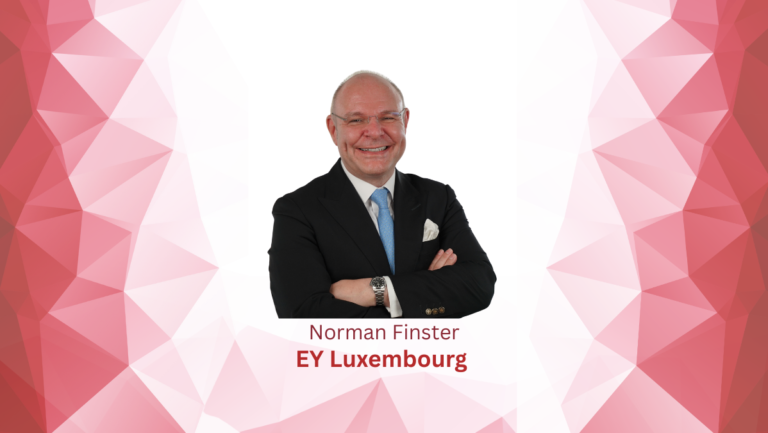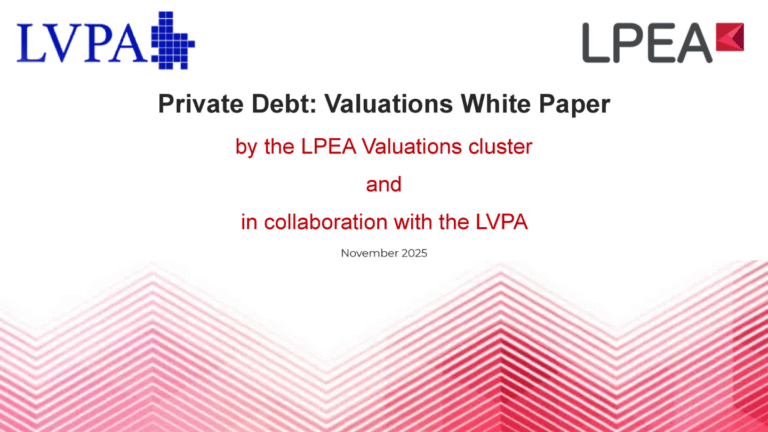Interview with Swancap
Capital V #9 | Seeking Every Opportunity for Higher Returns
Interview with Swancap’s team in Luxembourg on their “triple” strategy of investments in funds, co-investments and secondaries.
Anja Grenner (AG) – SwanCap was founded in 2013 but there is a good deal of history before that moment.
Claus Mansfeldt (CM) – We have invested in Private Equity since the year 2000 as part of UniCredit Bank, originally as an adjunct to the leveraged finance business. This is the background to what we do and there are important aspects of that, such as a deep understanding of PE financing and risk. Analysis and diligence is something we were doing as part of the bank’s DNA. Moving into equity investing represented different risk-rewards and different diligence requirements, but there are also many parallels.
As of now, we are 27 people worldwide, of which six are based in Luxembourg. We manage about EUR 3 billion in private equity strategies, comprising primary PE funds, secondary investments in PE funds and direct co-investments. To date, we’ve invested cumulatively in excess of EUR 5 billion since 2000. This consists of commitments to over 150 funds and 80 co-investments.
AG – is there any specific industry that the target funds should be invested in or do you look at performance figures only?
CM – Rather than specific industries we have limited ourselves to the more traditional and established mid- and large cap buyout markets and geographically to Europe and North America. This focus is a successful one, where we are comfortable and is the largest space in PE. Of course, indirectly we are occasionally exposed to certain high-growth technology sectors or emerging markets. Consistent performance with a focus on capital preservation is key for us. Sector wise we are, however, mostly agnostic. Having said that, infrastructure is rare to see in our portfolios.
AG – Despite being a growing market…
CM – In essence there is endless demand for the application of infrastructure funds but the question is how certain you are you can get a return and how stable the return is going to be. You get the terms of the business set by politicians, by governments and regulation and you commit on a very long-term basis with a lot of money. There are some pitfalls there but it’s undeniably a huge sector and can also offer good investment opportunities.
AG – SwanCap was officially spun out in 2013 but the executing team has been there since 2000. This means you are now exiting the first generation of funds still set up at UniCredit?
Andrea Millioni (AM) – The first two SwanCap funds have an average maturity of five to six years, with a combination of assets from the portfolio built by the team while still at UniCredit and new investments made since becoming an independent player. More recent funds are still in their investment period. In the past three years realisations have been strong, but new investment activity also continued at a healthy pace. As we fundraised in conjunction with the launch of SwanCap, we gained new capital to deploy from day one. So we have been very active in the market in the last 17 years without any break.
AG – So you have been able to build up a good track record since. What is the IRR to date?
AM – The gross IRR we have generated is about 17% (per annum) and the net around 15%, which we believe puts us in the top quartile in the FoF business. We obviously try to look at benchmarks and there are different ways to compare performance because we do not have a specific fund for each vintage. Nevertheless, by looking at groups of three consecutive vintages since 2000 we believe we have been consistently performing extremely well vis-à-vis our peers.
AG – Is part of that good track record due to a combination of making investments in funds and direct investments or is it just the selection of the right funds?
CM – It all relates to good GPs, but also deal selection and deep Due Diligence and direct investment capabilities. In our case we have found that direct co-investing has been a great portfolio management tool. We can rebalance the overall portfolio, accelerate deployment or slow it down by our own choices. This contrasts to one’s more passive invest-along duty as an LP in a given fund. To answer your question, yes, fund-selection is key but also the active co-investing side can be accretive to overall returns, by several percentage points, in our experience.
AM – Part of it is about being disciplined in selecting good GPs and good co-investments but another part is due to the lack of an extra fee layer.
CM – We probably run a higher ratio than the market with up to 20% to 30% allocation to co-investments. Our firm is populated with direct investment expertise and that helps us gain conviction to take on extra commitments in co-investments. When you do a co-investment you really stick your neck out – a bit like the underlying GP himself. You can’t hide behind the fact that you’ve just been drawn into it like a general LP. You need to be convinced when you proactively opt to invest tens of millions euros into it.
AG – What does it take to be successful in doing co-investments?
AM – There are many factors. It all starts from having a strong pipeline of opportunities. Effective sourcing requires one to be very close to the GP investment teams. We try to get into deals early, even before the sponsor secures the investment. In some cases, we are part of the bidding consortia, especially when our own insights, knowledge and experience in direct investments may add value. We leverage our expertise in specific sectors but also spend money in our own independent due diligence to deepen of our understanding of a business or challenge plan assumptions.
Then it is about deal selection and ability to maintain pricing discipline throughout the cycle. We very much focus on risk-adjusted returns. Regarding performance, all data shows that private equity is a profitable asset class but there is a wide gap between the top and the low performers; we strive to remain part of the former group by only deploying capital when we have a strong conviction that an investment can deliver at least our target returns. In our experience, the most attractive co-investments often relate to quality businesses offering visible strong cashflow generation and multiple levers of value creation. About risk, we always look at capital preservation for each investment while careful portfolio construction is a very powerful tool in reducing overall risk via diversification by GP, vintage, sector and geography at fund level.
AG – Do you have two different teams for direct and indirect investments?
CM – Yes, we have capacity in both categories. Of course they are intimately connected. We run our firm as a specialised boutique. That means we try to reap the benefits of being focused and integrated. We sit around the table on a regular basis and cross-fertilize the information completely between the two teams. It’s very frequent that we have a combination of experiences and professionals who work on the same files and, on top of that, the investment committee is the same.
AM – Needless to say, the experience in looking at specific companies is also beneficial to the analysis that is run on new fund investments because part of the exercise is to assess the quality of the past investments and understand how GPs created value, be it by growing the company’s EBITDA organically or via acquisitions, deleveraging and/or multiple arbitrage. In addition, this allows us to test whether the strategy they implemented is consistent with their stated objectives and whether valuations provided during fund raising are reliable, conservative or overly optimistic.
The same can be said about secondary purchases of fund interests. In order to correctly price mature funds you need to run a detailed company-by-company analysis to understand the asset base, value creation from that specific point onwards, exit options and likely timing, and the overall risk profile.
AG – Is the co-investment route embraced by all of your investors or you also have investors who just want to go down the more diversified fund route?
CM – Yes, we have some mandates that express their preference for the diversified fund approach only and we tailor the solution to their requirements.
AM – It is also fair to say that some investors have expressed a desire to find ways to have a pure direct investment strategy which would allow a faster deployment of their capital and leverage on our ability to work on a more concentrated portfolio.
AG – Is the number of investors willing to accompany you in direct investments growing?
CM – That is what we sense, partly because the numbers that we have demonstrated suggest doing so. Given the risk adjusted perspective one has to have in mind that with more concentrated portfolios the risk is higher than with a vastly diversified underlying portfolio. It requires a fairly committed investor to pursue the higher portions of co-investment exposure. To us making co-investments is our second nature. It is up to us to persuade others to embrace this further.
AG – Being a recent kid on the block, your investors are still coming mostly from German speaking countries?
CM – Actually, we have a global investor base. We focused initially on very sophisticated investor names internationally who were ready to understand the track record we had and could also take a view on the assets we had with us. We now have everything from sovereign wealth to very large scale pension funds in North America and Europe as well as very large family offices. However, in the recent first closing of our third multi-investor fund we have been encouraged by broadened demand from also mid-size institutional investors, especially from the DACH region as well as Italy.
AG – You are also reaching out to family offices?
CM – Yes, we already have some family offices who have invested into our funds. We sense there is a continuing trend of European mid-size institutions and family offices increasing their allocation to PE. One comment on family offices though is that some are not necessarily mandated to do alternative investments. They are more often mandated to do mainly liquidity management so there is a little bit of differentiation within the family office space. Perhaps the founder family perceive that what they do on their entrepreneurial side constitutes their PE exposure. We would argue that institutionalised PE investments sit somewhere in between, more like pension savings or legacy endowments.
There is also a lack of awareness of how the investing actually works, how are the cashflow dynamics of the PE FoF investing and perhaps how one does the accounting for it at the family office level.
AG – How are you selecting your fund-commitments? Are co-investments going along with the selection of the funds?
CM – The direct co-investments are very much assessed as a tangible asset that you can evaluate, although they are also managed by a given GP. Co-investments are therefore assessed both in terms of intrinsic opportunity, standalone, as well as in terms of GP credibility overall. The selection of the primary fund is, however, akin to a sort of recruitment process. You want to make sure that all the claims that are made in front of you make sense and stack up. Some of the most important aspects of a primary fund selection is to be convinced through due diligence, references and experience that the firm has a consistent track record, the right strategy and a cohesive culture. Most of all, the leading partners have to be fully trustworthy. We need to gain a very strong conviction that they will do as they said, that they will not drift, that they will exercise pricing discipline. It is a combination of soft and hard facts. Hard facts are the rear view mirror and the soft facts are the assessment of what they say they will do.
AM – For primary funds, due diligence begins with the assessment of the GP’s general background and our relationship with them, their focus in terms of business profile and size, sector and geography, and type of ownership. We review the GP’s current set-up and their expected ability to deploy capital in light of the fund’s target size. We look at track record, which we benchmark against funds from the same or similar vintages, strategy and focus as well as public market equivalent indexes. We look at the team in detail and run background checks when required. We verify deal attribution – extremely important because we want to make sure the investment team for the new fund is the same who generated attractive returns in the past. We look at personnel turnover and composition and functioning of the investment committee. We take a view on key man clauses and the effectiveness of staff compensation, including carry allocation and any other incentive schemes. We check terms and conditions and we use both in-house legal counsel and external to make sure that we are not missing anything. There have been a few cases in which we had to negotiate and obtain improved legal terms which then applied to other LPs. We look at the ability to generate co-investment opportunities. We speak to past and current investors as well as other LPs who might have decided not to commit to the fund. We focus on ESG – we are one of the early adopters of systems to assess commitment to responsible investing by GPs. Finally, it goes without saying that we look at each fund in the context of what else is already available or about to come to the market, thus adopting a wide view to identify the best opportunities for our investors.
CM – This is important. You’re never forced as a deal team to complete a trade. We’re all in the same boat, and everyone from junior to senior has invested in our own funds, so there is full alignment of incentives with our investors.
AM – I believe that having been in the market for 17 years now, we have a fairly comprehensive database of investments which were either made or rejected but still analysed and assessed. That provides a great deal of analytics and benchmarks we use internally. I would like to stress that we pay significant attention to returns distribution, including reliance on so called “home runs”, loss ratios and write down ratios. In other words, we assess performance against return volatility and have a clear preference for steady, consistent results across investments and over time.
AG – What about your process in taking secondary positions?
CM – It’s effectively a hybrid so we like going in with familiarity. If we’re already with the given GPs or if there is a portfolio of GPs and funds with which we are familiar, we can quickly assess and price. If there are some new elements to the secondary, maybe an asset we know but with a different GP, then we obviously need to establish the credibility of the GP and go through the full assessment process. Our current experience is that we can provide efficient liquidity, especially for those that wish to monetise single fund assets or smaller portfolios.
AG – Are secondaries and direct investments the fastest growing parts of your portfolio?
CM – The answer is they will all grow and I think we will maintain a relatively high level of exposure to secondaries and direct investments. Overall we’re maintaining a fairly stable ratio.
AG -You opted for Luxembourg as home jurisdiction for the fund from the first moment on. What was the reason for this?
Holger Emmel (HE) – At the time in 2013, just as the AIFMD went live in Europe, we were questioning ourselves, where could be the perfect headquarters for the regulated entity, and we rapidly came to the conclusion Luxembourg would be ideal as we wanted to market the funds across various European jurisdictions. For instance, our current fund is marketed in 15 countries in Europe. Luxembourg was an early adopter of the AIFMD Directive, thus providing a clear regulatory environment, and was known for having a very knowledgeable and responsive regulator. We also found a supportive and highly professional ecosystem with where we could select the right service providers for our needs and a very international workforce to leverage on.
So it was a multitude of elements that brought us to Luxembourg being very aware that a Luxembourg fund brand is highly recognised and that investors rarely question the use of a Luxembourg vehicle.
AG – How have you organised the set-up here in Luxembourg?
HE – I believe we were amongst the first handful of managers to obtain an AIFM licence here in Luxembourg. We started with two FTEs who moved from London, and then added local resources as the platform expanded. We now have six full-time employees based in Luxembourg. Since the beginning, we wanted to have our own AIFM with substance on the ground, covering portfolio and risk management, valuation and compliance, and set up on a strong control framework for the delegated functions, in particular central administration. We continue to build and strengthen our platform as we are growing.
AG – So substance is definitely not an issue for you. I would assume that the investment advisor in Germany would be proposing the valuation to the AIFM. How do you do this?
AM – It really depends because obviously, by investing in funds, for the vast majority of the portfolio we receive NAVs from the GPs directly managing the investments. We review GP reporting in detail, for instance to check their use of fair values in accordance with the relevant accounting principles and industry standards, such as the latest IPEV guidelines. We are very much on top of the numbers that we receive and are able to challenge them if required. In some limited instances, valuations might not be provided with the frequency that we need or not be available for a specific position. In such cases, we perform internal valuations here in Luxembourg by making reference to very granular technical guidelines we developed to ensure a consistent approach across assets and over time. We indeed get support from our German advisor, it is a true joint effort, but the ultimate decisions are taken by the valuation committee in Luxembourg. For internally valued assets, to the benefit of our investors, we complement our process with an external review by a recognised audit firm at least on a yearly basis.
AG – How does compliance work in Luxembourg?
HE – I am responsible for the AIFM compliance here in Luxembourg, which is fully independent, and we comprehensively take care of the compliance, with all legal, regulatory and contractual requirements. This covers good corporate governance of the manager as well as of all of our fund entities but also includes all the other regulatory requirements, which need to be reviewed and updated continuously, to keep pace with the evolving regulatory landscape alongside the growth of the business.
AG – Besides the regulatory requirements – which you obviously have to comply with – are investors actually looking at compliance more in-depth today?
HE – Yes, very much so. We get frequent requests from current and future investors. Compliance is very much at the core of their due diligence. They really look at how we approach compliance and challenge our policies and procedures
AM – In particular during fundraising, we have experienced potential investors sending specialised operating due diligence consultants from the U.S., Canada and the UK to spend a day or two with us. They wanted to see first-hand our processes and systems, and make sure that what we say is for real and that it stacks up not just on the commercial side of our proposition but also with regards to our AIFM operations. We are very pleased we always received positive feedback following all ODD sessions undertaken with prospective investors and their advisors.
HE – We also use our own experience as a Manager to our own benefit when investing, as we have a very deep understanding about how a strong compliance framework should look like. We apply anything we know and learn to our own operational due diligence and risk assessment about potential target investments. As we know how a management company should work, we can really ask the right questions.
CM – This is also a competitive element. If an investor has the choice with a best-in-class practice – compliance, ESG, etc., all else being equal, the investment committee will have a very easy choice to make. We have decided to be at the forefront of that. We have recently joined the United Nations Principles for Responsible Investing.
AM – One other area where we try to differentiate ourselves is the reporting we produce on a quarterly basis for every fund. It mixes quantitative and qualitative information, including detailed analytics from the portfolio software we use internally but also broader information from the market. Information is always appreciated, in particular by the more professional investors which sometimes act as the anchor for a fund.
AG – A lot of investor information is compiled in-house but also your service providers contribute considerably.
AM – Last year we migrated to a specialised service provider which allowed us to optimise and enhance our reporting. They were able to develop new templates to our own specifications and design. We are really trying to establish true partnerships with our service providers to be able to go beyond basic requirements, jointly develop new tools and continuously improve the quality of reporting.
CM – It’s more of an extended work bench than blind outsourcing. It’s a very intimate relationship but we found that was critical. Accounting for PE flows is complex and still a bit of an art form as the information arrives in different formats. It is a bit handcrafted.
AM – It is good to work with highly professional service providers but we keep faith in the old saying “trust but verify”. We try to avoid having to rely on a single system or model. Instead, we run shadow accounts and calculations to make sure no inaccuracy or glitch escapes. And we are constantly looking for automation to simplify the process.
AG – As an investor in target funds are you demanding the same level of automatisation and reporting?
AM – It very much depends. There is a very wide degree of transparency and tools which are provided to LPs. One of the complexities of running a FoF is making sure underlying investment information about a broad portfolio is gathered and organised in a consistent and reliable manner. We have significant experience in working with multiple reporting formats and investor relations teams, but when something is not entirely clear we pick up the phone and address any question or concern we might have. While reporting mistakes by highly reputable GPs and their service providers are extremely rare and easily rectified, they might still occur. Prompt identification is very helpful in protecting our investors’ interests.
AG – Do you also do a due diligence on the service providers of your target funds or does it not go so far?
HE – Yes, to a certain extent it is part of our operational risk assessment of the target fund. We look at how the management company is set up and if they have delegated tasks; in that case we also look at who the delegates are and how they are monitored.
CM – In certain cases we have even managed to instil changes in the given GP’s practices. We had a recent case in the U.S. where there were potential conflicts in the in-house administration and we found upon scrutiny that the distribution of tasks was not consistent with best practices and as a condition of investment we proposed, and gained, a change. We are not shy at making recommendations.
About Swancap
SwanCap is an independent investment management platform with a dedicated focus on private equity in Europe and North America. SwanCap is particularly specialised in the buyout segment offering an “integrated investment strategy” to its predominantly institutional investors by combining private equity primary investments, direct secondaries and direct co-investments. The investment history of the SwanCap team dates back to the year 2000. Today, the firm manages c. EUR 3bn of assets out of offices in Munich, Milan, Luxembourg and New York.
“We sense there is a continuing trend of European mid-size institutions and family offices increasing their allocation to PE.”




